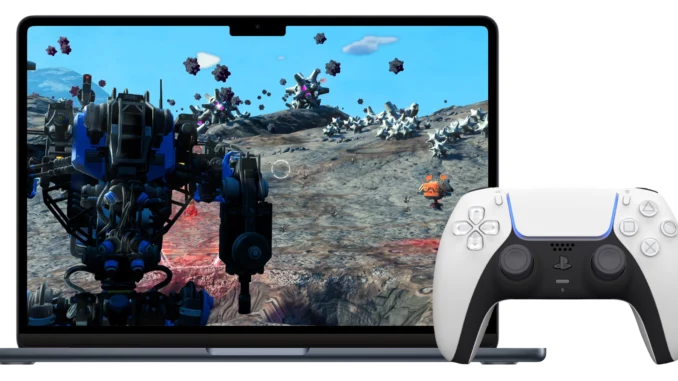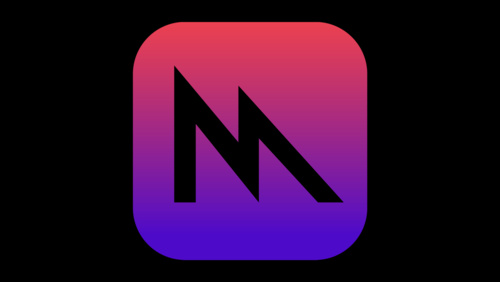
Apple stated on October 18th, 2022, that Mac OS 13 Ventura will be released on October 24th. While Ventura brings plenty of fun new updates to Mac OS for our fruit-loving fellows, one of the most significant changes is arguably Metal 3. What is Metal 3, and why should you care?
What is Metal 3?
Think Vulkan and Direct X. Metal 3 is very similar. Metal is Apple’s graphical API layer connecting application developers’ code to bare metal (no pun intended) hardware.
Metal is supported on all Apple hardware, including Radeon Pro GPUs, Intel’s iGPU, and Apple Silicon SoCs. Otherwise, iPhones, iPads, and Macs all support it.
Unlike DirectX or Vulkan, one of the advantages of Metal is that a single game can be deployed across various (Apple) devices without many headaches. DirectX is limited to the Windows OS (including Xbox), and games using Vulkan still need some tweaking to run appropriately on different OSes (note Apple doesn’t support Vulcan…) That’s where the advantages end.
Why is Metal 3 such a big deal?
Metal has been lagging in the game industry for some time. It’s no secret that you don’t game on a Mac. This is part of the reason why.
Apple’s market share is tiny compared to Windows. That’s a known fact. However, that isn’t the driving force behind developers’ decisions to not support Mac OS in their games.
I hear the metal clangs of pitchforks. Give me a moment to plead my case.
Windows is King

Windows is dominant because of Bill Gates. Full stop. It’s easy to point at the numbers and say that Windows is king. The devil is in the details, however. Windows is king because of the enterprise environment.
If you’re unfamiliar with Bill Gates, he wasn’t always the kind philanthropist he is today. Bill Gates was one of the most ruthless businessmen outside of Carnegie and the other rail barons that existed a century ago. He made sure the Windows OS was the keystone for all computing platforms inside every business.
And it worked. Linux is regulated to smartphones, IoT devices, and servers. Despite more robust GUIs and better stability, the year of the Linux desktop never really happened. Mac OS became a novelty that only creators used. Macs still hold that legacy mind share from two decades ago to some extent.
The enterprise is the only reason Windows is still the dominant OS today. There is far too much inertia for businesses of any size to move away from Windows. Large companies purchase or lease thousands of laptops and desktops from vendors like HP and Dell every quarter to update aging machines.
Look past the enterprise, however. Apple devices are proliferating everywhere. Half the US owns an iPhone. Macs are becoming normalized inside the household. While Mac OS will never become a dominant force, it’s becoming measurable enough in specific market segments that it’s hard to ignore.
Apple Ain’t Got No Game
Apple never cared about gaming – until it did. There’s a lot of history to cover beyond this article’s scope, but let’s run through why Apple sucks at gaming.
There is an alternate universe where Apple doesn’t exist. That’s because it almost went out of business. Mr. Gates donated to the Apple fund to keep them afloat.
Back in the day, Macs were stupidly expensive. They still are, but they hold a much better value proposition than they used to. No one bought Macs twenty-plus years ago unless they were creators or had lots of money. There wasn’t a reason to support games on Macs because no one had a Mac.
After Apple fell and came back to life as Zombie Apple (resurrected two times over by the late Mr. Jobs), Zombie Apple is doing well. In fact, Zombie Apple makes the world’s most popular smartphone.
And there it is. There is finally a reason to make games for Apple hardware. The problem is that the targeted platform is a mobile device, and mobile gamers aren’t a real thing (/s).
Apple realized they had a foot in the door years ago, so they created the first version of Metal. Metal significantly improved graphical performance on Apple’s mobile devices (iPhone and iPod touch). Metal eventually made its way to Mac OS.
Metal 2 was eventually released. It improved Metal a lot, but it wasn’t enough. Apple knows how much money is in the gaming industry, and they want a piece of that pie.
Apple’s next venture into making Metal gaming mainstream was Apple Arcade. I’m glossing over many things here, but that’s the next notable point in Apple’s gaming history.
Still, it never gained traction, and Metal didn’t get much love. That is, until October 24th.
Why is Metal 3 so Important for Apple?
Let’s be clear before we go any further in this section. It’s safe to put down those pitchforks. Apple isn’t going to become the dominant gaming platform.
So why is Metal 3 such a big deal?

Metal 3 includes features missing from Apple’s graphical layer that has been present in Direct X and Vulkan for a while now. This includes things like geometric shaders, direct storage support, etc.
These new features give game developers a chance to port modern games to Mac OS. The Mac OS consumer crowd is large enough that it might be worthwhile for game developers to consider it more.
Likewise, game engines like Unreal and Unity already support exporting games using the Metal API. If you opt to use Unreal’s visual code editor, you don’t even need a device with Mac OS to compile and export the game. Capcom added Metal support to their RE engine, and No Man’s Sky is also coming to Mac OS.
343 Studios announced they might be switching to the Unreal engine in the future to attract more game dev talent. Could we see Halo Infinite on Mac OS? My younger self would have once laughed at that question, but Nadella’s version of Microsoft has proven that it will meet customers where they are, just as Nadella proclaimed so many years ago.
More importantly, Metal 3 could be significant for other reasons. Games aren’t the only pieces of software that need access to the GPU. 3D modeling, CAD, hypervisors, and ML apps will benefit from an enhanced graphical layer. We might also get a decent PS3 or Nintendo Switch emulator on the Mac.
Ultimately that might be Apple’s goal here. I use a MacBook Pro as my daily driver because battery life is king for me, and Linux doesn’t like the AMD hybrid architecture in my gaming laptop (Prime hates me.) I’ll be honest, though; it’s not a graphical powerhouse. The M1 Pro GPU in my MacBook is the 14-core variant, and it benchmarks about as well as a Radeon RX5500. It’s okay, but for the price, it’s downright pathetic.
Let’s be clear, even though the new Geforce 4090 isn’t a gaming card, it’s still a far better value in every way than a Mac (even after the cost for the rest of the computer).
M1 Max Need Not Apply
No one is buying an M1 Max or Ultra for gaming. The plain Jane M1 and M1 Pro don’t have enough GPU power to game well. Windows machines have been able to go toe-to-toe against Mac OS in the creator world for decades, but Mac OS still holds a good chunk of the creator segment.
Nonetheless, Apple has been losing traction in the 3D space. Their outdated API and lack of Cuda support make it very hard to compete against Windows.
The only place Metal 3 makes sense for gaming in the Apple ecosystem is iOS and TV OS. I could see Apple making a play with devs to port games to the iPad now that the M1 chip is trickling into cheaper iPads. But the iPad Air costs more than a PS5, and Apple doesn’t give much love to TV OS (unlikely anyone would buy a mythical $300+ Apple TV for gaming with an M1 Pro chip in it anyway).
So, what’s the point of Metal 3? Apple needs to keep up with the Joneses. That’s about it. Professional apps could benefit. Machine learning might be able to utilize the GPU a bit better. Apple won’t get gaming right – their hardware is too expensive. And, most importantly, Craig Federighi got ten more seconds to flip his fabulous mane in front of the Apple die-hards back in June when Metal 3 was announced.

Be the first to comment